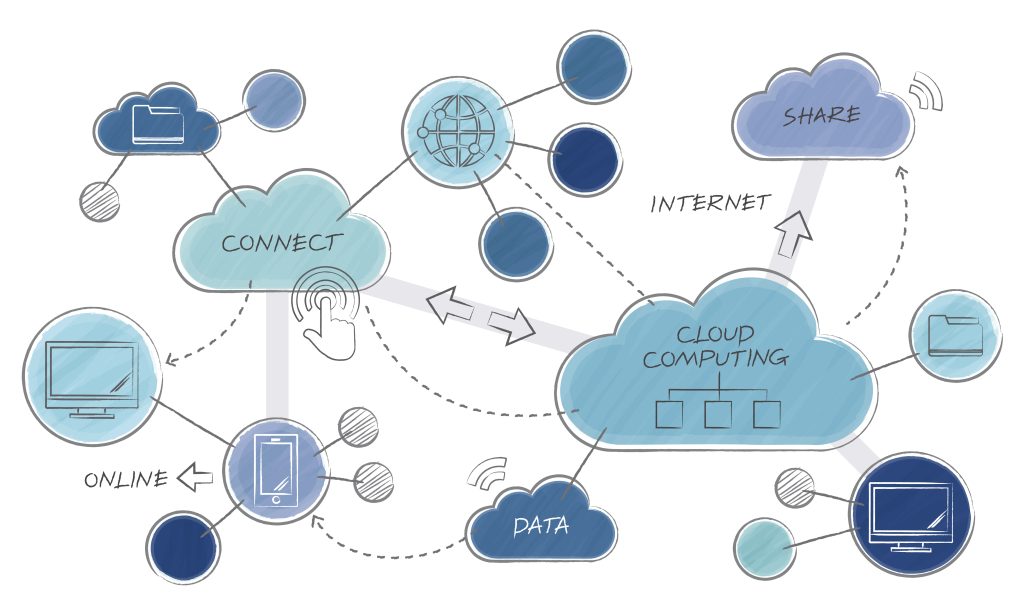Fusing Einstein GPT With Flow Data Cloud For Data Symphony
The ever-growing volume and complexity of data pose significant challenges for businesses seeking to gain valuable insights and automate workflows. Fortunately, advancements in artificial intelligence (AI) offer promising solutions. This paper explores the potential of fusing two powerful Salesforce technologies: Einstein GPT and Flow Data Cloud, creating a Data Symphony that empowers businesses to unlock the true potential of their data.
Harnessing AI Brilliance: Einstein GPT Deep Dive
Einstein GPT, unveiled by Salesforce in 2023, stands as a groundbreaking innovation in the realm of Customer Relationship Management (CRM). This powerful AI tool leverages the transformative power of Generative Pre-trained Transformers (GPT) technology, specifically designed to generate human-quality text formats.
Empowering Data Management with Flow Data Cloud
Flow Data Cloud, another revolutionary offering from Salesforce, empowers businesses to centralize, govern, and unlock the true potential of their data across various sources. This section delves into the core functionalities and how it paves the way for a data-driven symphony:
- Centralized Data Hub: Flow Data Cloud acts as a central repository, ingesting data from diverse sources like CRM systems, marketing platforms and social media. This eliminates data silos and fosters a unified view of customer information.
- Automated Data Pipelines: Flow Data Cloud automates data ingestion, transformation and cleansing processes, eliminating manual efforts and ensuring data quality.
- Risk Management: Identify and mitigate potential risks associated with customer behavior or financial transactions.
- Personalize content and interactions based on real-time customer data.
Bridging the Gap: Integrating Einstein GPT and Flow Data Cloud
The true magic unfolds when we bridge the gap between the AI brilliance of Einstein GPT and the data management prowess of Flow Data Cloud. This section explores the potential for their integration and the resulting “Data Symphony”:
- Data Flow & Transformation: Flow Data Cloud acts as the conductor, orchestrating the flow of data from various sources. It cleanses, transforms, and prepares the data for consumption by Einstein GPT.
- API Integration: Seamless integration between Flow Data Cloud and Einstein GPT APIs is crucial for smooth data exchange and triggering actions based on AI outputs.
- Enhanced Customer Experience: Personalized interactions, content, and support based on real-time data insights.
- Complexity of Integration: Integrating two powerful technologies requires careful planning, technical expertise, and ongoing maintenance.
Boosting Efficiency: AI-Driven Insights with Einstein GPT and Flow Data Cloud
In the dynamic business landscape, efficiency reigns supreme. This section delves into how the fusion of Einstein GPT and Flow Data Cloud can empower businesses to achieve significant efficiency gains through AI-driven insights:
- Einstein GPT’s automation capabilities can streamline repetitive tasks like data entry, report generation, and email marketing campaigns. This frees up valuable human resources to focus on strategic initiatives.
- Flow Data Cloud provides real-time access to comprehensive customer data.
- Einstein GPT personalizes content and interactions based on individual customer data and preferences.
- Einstein GPT analyzes historical data and identifies trends to predict future outcomes.
- The Data Symphony fosters a culture of continuous learning and improvement.

Overcoming Challenges and Best Practices
While the potential of fusing Einstein GPT and Flow Data Cloud is immense, navigating the associated challenges is crucial for successful implementation. This section explores key considerations and best practices to ensure a smooth and successful journey:
Addressing Challenges
- Data Quality and Governance: Implement robust data quality checks within Flow Data Cloud to ensure the accuracy and relevance of data fed to Einstein GPT.
- Technical Expertise: Seek the assistance of qualified professionals with expertise in both Salesforce technologies and AI integration.
- Ethical considerations: Carefully monitor and audit AI outputs to identify and mitigate potential biases.
Best Practices
- Start Small and Scale Gradually: Begin by integrating Einstein GPT and Flow Data Cloud for a specific use or department.
- Focus on User Adoption and Feedback: Involve stakeholders and end-users throughout the integration process to gather feedback and ensure the system addresses their needs effectively.
- Continuous Monitoring and Improvement: Regularly monitor the performance of the integrated system, identifying areas for improvement and fine-tuning data pipelines and AI models as needed.
Future Trends and Innovations
As the landscape of AI and data management continues to evolve, the potential for the Data Symphony, formed by the fusion of Einstein GPT and Flow Data Cloud, expands even further. This section explores some exciting future trends and innovations on the horizon:
- Enhanced explainability and transparency
- Integration with Advanced AI techniques
- Democratization of AI for businesses
- Continuous Learning and Adaptation
- Ethical Considerations and Human-AI Collaboration
- The rise of Generative AI applications
- Integration with the Internet of Things (IoT)
Case Studies: Realizing the Potential
While the integration of Einstein GPT and Flow Data Cloud is still relatively new, several companies are already exploring its potential to unlock significant benefits. Here are a few examples:
Case Study 1: Personalized Marketing at a Retail Grant
Challenge: A major retail chain struggled to personalize marketing campaigns effectively due to siloed data and limited customer insights.
Solution: The company implemented Einstein GPT and Flow Data Cloud to:
Centralize customer data: Flow Data Cloud unified data from various sources, including purchase history, browsing behavior, and loyalty programs.
Generate personalized recommendations: Einstein GPT leveraged this data to generate targeted product recommendations, email content, and social media ads for individual customers.
Results: The company observed a significant increase in click-through rates, conversion rates, and customer satisfaction due to the personalized marketing campaigns powered by the Data Symphony.
Case Study 2: Streamlined Customer Service at a Financial Institution
Challenge: A leading bank faced challenges in handling high volumes of customer inquiries and providing timely support.
Solution: The bank integrated Einstein GPT and Flow Data Cloud to:
Automate repetitive tasks: Einstein GPT powered chatbots to answer frequently asked questions, schedule appointments, and resolve simple customer issues.
Personalize customer interactions: Chatbots leveraged customer data to personalize responses and provide relevant information.
Results: The bank witnessed a significant reduction in call volume and improved customer satisfaction due to the efficient and personalized support offered by the AI-powered chatbots.
Case Study 3: Predictive Maintenance in Manufacturing
Challenge: A manufacturing company experienced unexpected equipment failures, leading to production downtime and lost revenue.
Solution: The company integrated Einstein GPT and Flow Data Cloud to:
Analyze sensor data from machines: Flow Data Cloud collected real-time data on equipment performance.
Predict potential failures: Einstein GPT analyzed the data to identify anomalies and predict potential equipment failures before they occurred.
Results: The company implemented preventive maintenance based on AI-driven predictions, significantly reducing downtime and improving overall production efficiency.
These case studies illustrate the diverse applications of the Data Symphony and its potential to transform various industries. As more companies explore this innovative approach, we can expect even more exciting success stories showcasing the power of AI-driven data management and automation.
A Roadmap to Implementation
Successfully implementing the Data Symphony, formed by the fusion of Einstein GPT and Flow Data Cloud, requires careful planning, execution, and ongoing optimization. This section outlines a roadmap to guide businesses through this process:
Define your Goals and Objectives
- Identify specific business challenges you aim to address.
- Outline the desired outcomes and expected benefits from the Data Symphony.
- Align these goals with your overall data strategy and business objectives.
Assess Your Data Landscape
- Evaluate the quantity, quality, and accessibility of your existing data.
- Identify data sources and potential siloes that need to be integrated.
- Develop a plan for data cleansing, transformation, and governance.
Develop a Phased Implementation Plan
- Start with a pilot project focusing on a specific use case.
- Gradually scale the integration to broader organizational workflows.
- Define clear milestones and deliverables for each phase of the implementation.
Assemble Your Team
- Identify individuals with expertise in Salesforce technologies, data management, and AI.
- Consider seeking external support from qualified consultants and implementation partners.
- Invest in training programs to equip your team with the necessary skills and knowledge.
Integrate and Configure Technologies
- Establish seamless API integration between Einstein GPT and Flow Data Cloud.
- Configure data pipelines and workflows to ensure smooth data flow and execution of AI-powered tasks.
- Implement robust security measures to protect sensitive data throughout the integration process.
Pilot, Test and Refine
- Thoroughly test the integrated system to identify and address any potential issues.
- Gather user feedback and iterate on the solution based on their insights and requirements.
- Continuously monitor performance and fine-tune data pipelines and AI models for optimal results.
Conclusion
The fusion of Einstein GPT and Flow Data Cloud, aptly named the Data Symphony, represents a groundbreaking approach to data management and automation. By harnessing the power of AI and centralized data governance, businesses can unlock a wealth of opportunities to:
- Personalize customer experiences through targeted content, recommendations, and interactions.
- Automate repetitive tasks and streamline workflows, freeing up human resources for strategic initiatives.
- Make data-driven decisions based on real-time insights and predictive analytics.
- Boost operational efficiency and optimize resource allocation.
- Unveil hidden opportunities through comprehensive data analysis and AI-powered insights.
While challenges exist, such as data quality, ethical considerations, and technical expertise, following best practices and adopting a phased implementation approach can pave the way for a successful journey. As businesses embrace the Data Symphony and its transformative potential, we can expect to witness a new era of data-driven decision-making, intelligent automation, and exceptional customer experiences across various industries. This paper has provided a comprehensive overview of the Data Symphony, its potential benefits, and considerations for successful implementation. By harnessing the power of this innovative approach, businesses can position themselves for success in the dynamic and data-driven world of tomorrow.








